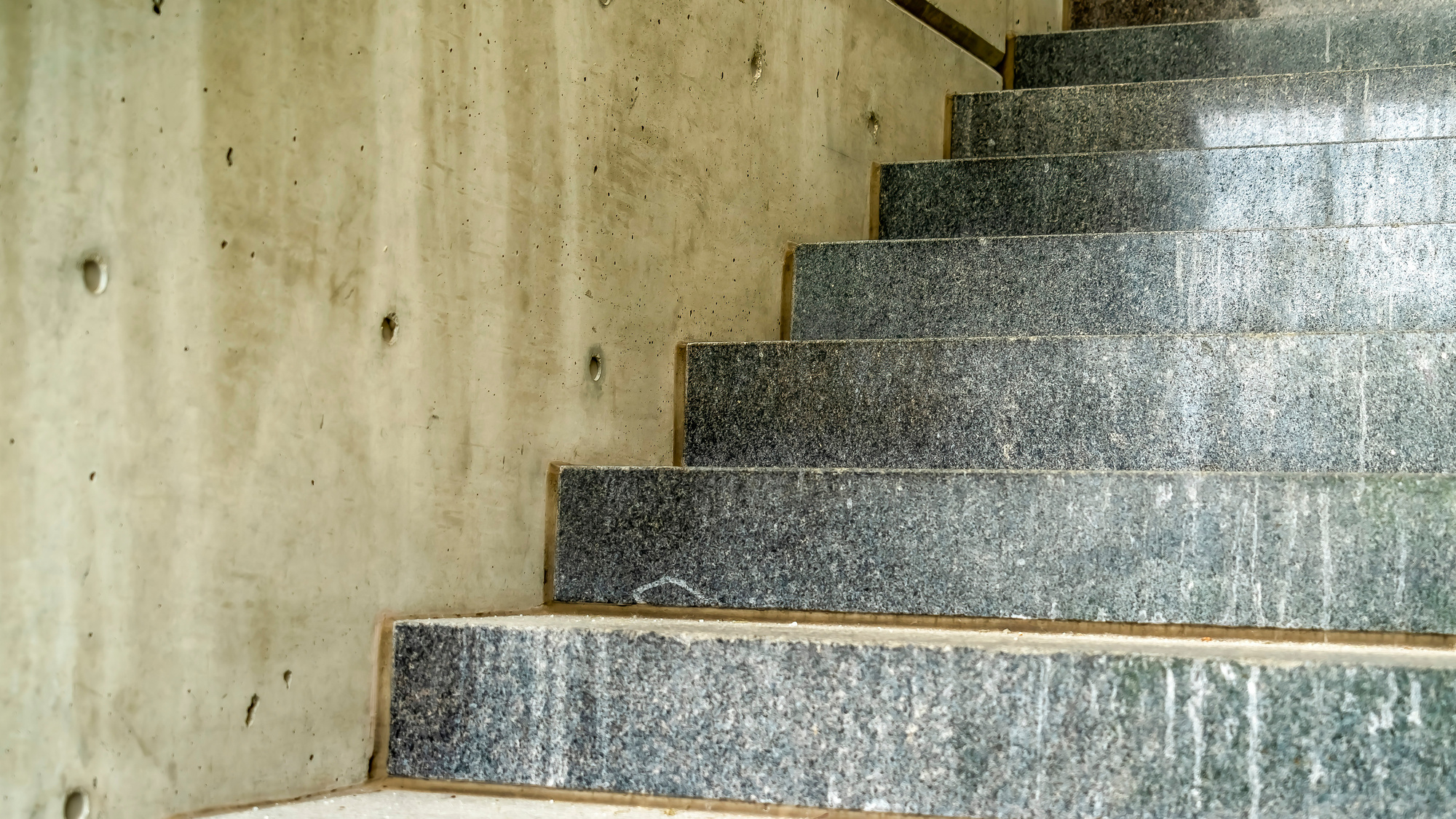Concrete stairs have long been popular for various construction projects due to their durability, versatility, and affordability. However, like any other material, there are pros and cons when using concrete for staircase construction.
In this blog, we will look into the advantages and disadvantages of concrete stairs, examining their suitability for interior, exterior, commercial, and residential applications. This article will also discuss what concrete stair treads are and how they are the best alternative for you.
Pros of Concrete Stairs
- Durability: Concrete stairs are incredibly strong and can withstand heavy foot traffic, extreme weather conditions, and long-term wear and tear, making them ideal for interior and exterior applications.
- Low Maintenance: Concrete stairs require minimal maintenance compared to other materials such as wood or metal. They do not rust, rot, or warp and can be easily cleaned with water and mild detergent.
- Cost-Effective: Concrete is affordable, making it an attractive option for budget-conscious projects. The low maintenance requirements also reduce long-term costs associated with repair and maintenance.
- Design Flexibility: Advancements in concrete technology allow for a wide range of designs, textures, and finishes for concrete stairs, providing architects and designers with extensive creative possibilities.
- Fire Resistance: Concrete is a non-combustible material, making it an excellent choice for fire-resistant staircases, particularly in commercial and multi-story residential buildings.
- Noise Reduction: Concrete stairs can help reduce noise transmission between floors, which can be a significant advantage in multi-story buildings.
- Longevity: Concrete stairs have a long lifespan, often lasting for several decades with proper maintenance.
- Stability: Concrete stairs provide a stable and secure walking surface, reducing the risk of slips and fall.
- Pest Resistance: Unlike wood, concrete stairs resist pests such as termites, ensuring their long-term structural integrity.
- Environmentally Friendly: Concrete is an energy-efficient material that can be locally sourced, reducing transportation-related emissions.

Cons of Concrete Stairs:
- Weight: Concrete is a heavy material requiring additional structural support, especially in multi-story buildings, which contributes to hefty construction costs.
- Installation Time: Concrete stairs require more time to install than other materials, as the concrete needs to be poured, set, and cured, which can delay construction timelines.
- Limited Aesthetic Appeal: While concrete offers design flexibility, it may need more warmth and character than other materials, such as wood or natural stone, which can disadvantage residential settings.
- Cold and Hard Surface: Concrete stairs can feel cold and hard underfoot, making them less comfortable than other materials.
- Cracking: Concrete stairs are susceptible to cracking due to temperature changes and ground movement. It usually needs more than patching or repainting – repairing broken concrete stairs can be challenging and may detract from their aesthetic appeal.
- Limited Retrofit Possibilities: Modifying or altering existing concrete stairs can be more complicated and costly than other materials.
- Moisture Absorption: Concrete can absorb moisture, potentially leading to mold and mildew in damp environments.
- Labor-Intensive Installation: Installing concrete stairs can be labor-intensive, requiring skilled workers and specialized equipment to complete the construction.
- Initial Cost: While concrete stairs are cost-effective over time, the initial investment may be higher than other materials due to labor and equipment costs.
- Inflexibility: Concrete stairs cannot be easily disassembled or moved, which can be a disadvantage if you seek flexibility.
Concrete Stair Treads: An Alternative With Benefits
Given that concrete stairs have their downside, modern technology addresses these with concrete stair treads. This innovative approach to stair design offers numerous advantages over conventional concrete stairs, from aesthetics to safety and durability. Concrete stairs tread currently stands out among the optimal choices for architects, designers, and property owners alike for the following reasons:
- Aesthetic Appeal: One of the most striking aspects of concrete stair treads is their visual appeal. Unlike conventional concrete stairs, which can appear drab, treads offer various customization options. From polished finishes to exposed aggregate and unique patterns, these treads can be tailored to complement any architectural style and space.
- Safety: Concrete stair treads are designed with safety in mind. Using slip-resistant surfaces, such as broomed or textured finishes, ensures that users can confidently ascend and descend the stairs without slipping. This added traction is especially valuable in wet or high-traffic areas. Conventional concrete stairs, on the other hand, can become hazardous over time due to wear and tear, making them less reliable in terms of safety.
- Durability: Engineered for strength and longevity, these treads can withstand heavy foot traffic and harsh weather conditions. Concrete stair treads are less prone to chipping, cracking, and general wear and tear. As a result, they require minimal maintenance, making them a cost-effective solution in the long run.
- Environmentally Friendly: Using sustainable materials, such as recycled aggregates and cement replacements, reducing the environmental impact of concrete production. And supports eco-friendly construction practices.
Takeaway:
When considering concrete stairs for construction, it is essential to weigh the pros and cons based on the project’s specific requirements. Concrete stairs offer numerous benefits, such as durability, low maintenance, and cost-effectiveness, making them a popular choice for various applications. However, drawbacks like weight, installation time, and limited aesthetic appeal should also be considered.
A compromise that fulfills both form and function is concrete stair treads. Ultimately, the decision will depend on each project’s unique needs and priorities, as well as the preferences of architects, designers, and property owners.

